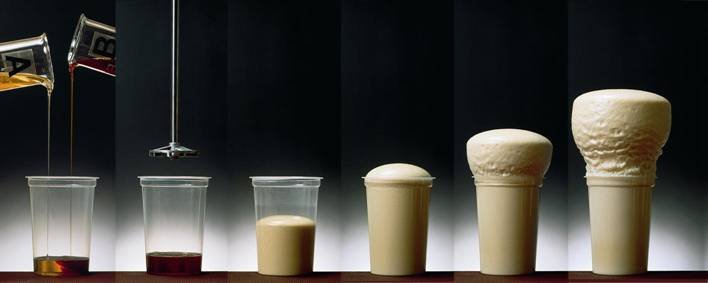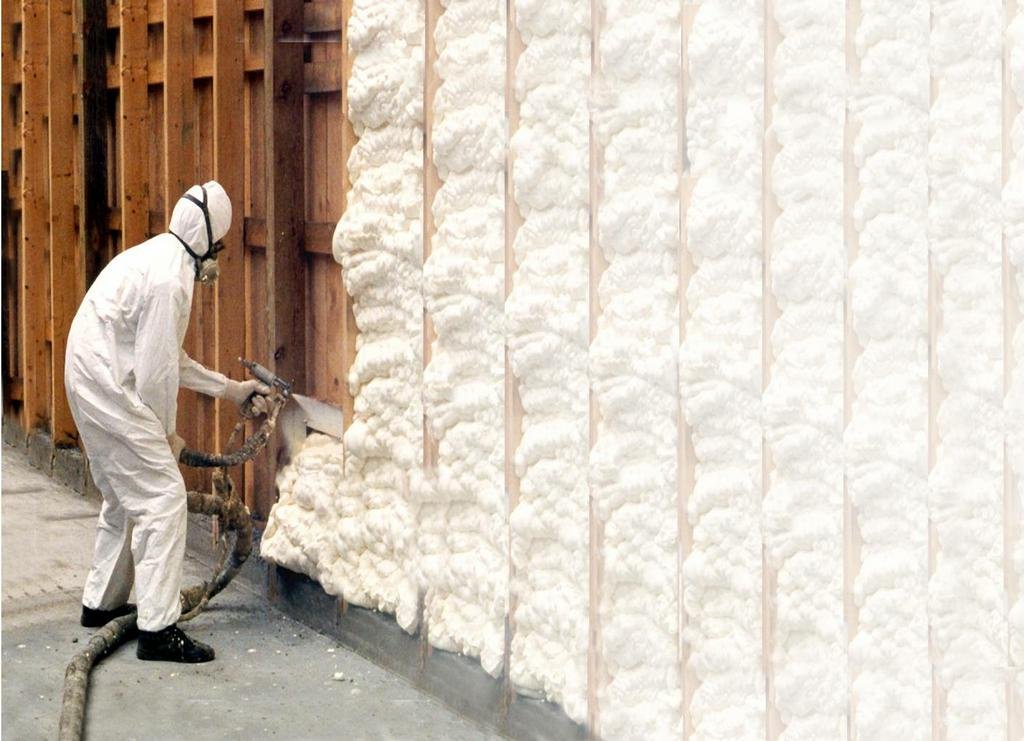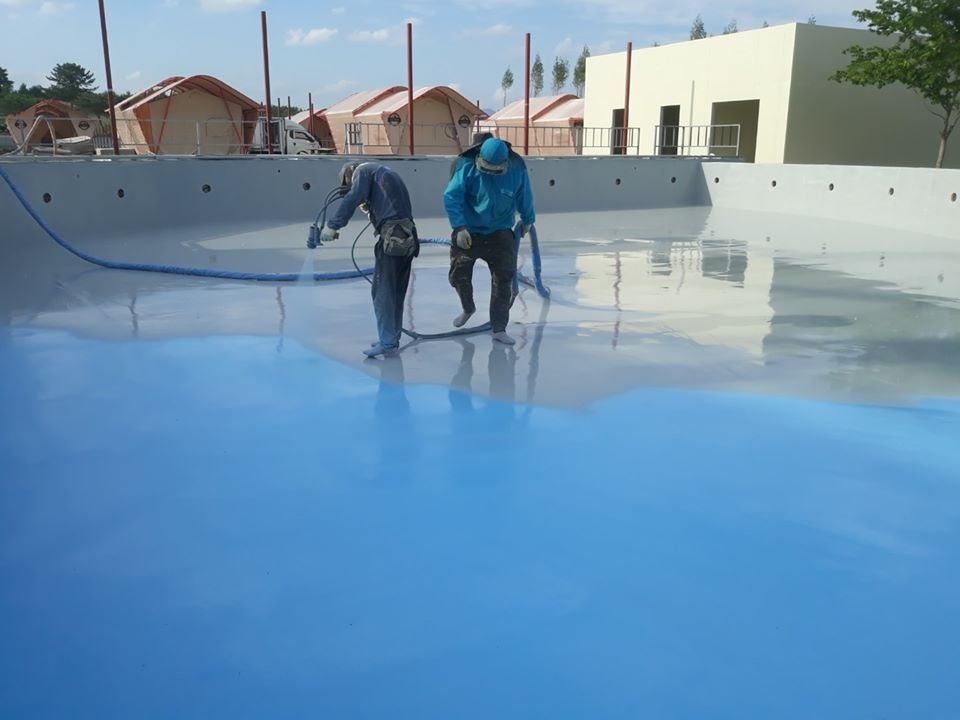Applications And Advantages Of Polyurethane In The Construction Industry
The industry value of polyurethane
Polyurethane (PU) is a highly versatile polymer material with significant application value, widely used in the construction industry. As an important building material, polyurethane plays a crucial role in enhancing the performance, energy efficiency, and longevity of buildings. In recent years, with the growing demand for green buildings, energy-saving, environmentally friendly, and high-performance building materials, polyurethane’s applications have gradually expanded across various stages of building design, becoming one of the representative new building materials.
The key advantages of polyurethane lie in its excellent thermal insulation, durability, lightweight properties, and waterproof performance. In addition, the high plasticity of polyurethane materials has made it a crucial component in building decoration. From thermal insulation to waterproof sealing and decorative materials, the multifunctionality of polyurethane makes it one of the key materials driving the transformation and upgrade of the construction industry.

Core Advantages of Polyurethane in the Construction Industry
Energy Efficiency and Insulation Performance
Polyurethane foam occupies a significant position in building insulation materials. According to data from the U.S. Department of Energy (DOE), heating and air conditioning systems in buildings consume approximately 40% of global energy, with heat loss being the primary cause of energy waste. Polyurethane foam has an exceptionally low thermal conductivity (approximately 0.022-0.028 W/m·K), making it one of the most efficient insulating materials and able to effectively reduce heat loss in buildings, thereby significantly reducing energy consumption.
For example, when polyurethane foam is used for insulation in building exterior walls and roofs, it provides superior insulation performance compared to traditional materials such as fiberglass and rock wool at the same thickness. Research by the Building Performance Institute (BPI) indicates that buildings using polyurethane foam can reduce annual energy consumption by 30%-40%.

Durability and Aging Resistance
Polyurethane’s weather resistance and aging resistance make it a crucial material in the Polyurethane foam exhibits excellent UV resistance, antioxidant properties, moisture resistance, and corrosion resistance, enabling it to withstand various environmental conditions that affect buildings. Particularly in areas such as exterior walls, roofs, and basements, which are exposed to extreme weather, polyurethane can maintain long-term stability and significantly extend the lifespan of buildings.
Moreover, the high-temperature and low-temperature resistance of polyurethane ensures its performance across diverse global climates. For instance, buildings using polyurethane materials can maintain their excellent physical properties in high-humidity, high-temperature areas, and prevent cracking or brittleness in low-temperature regions.
Environmental Friendliness
As an environmentally friendly material, polyurethane meets global green building standards. Modern polyurethane production equipment can significantly reduce VOC (volatile organic compound) emissions during production, thereby reducing the environmental burden of building materials. Furthermore, polyurethane itself is recyclable and has a relatively low environmental impact, making it a preferred material for many green building projects.
The environmental benefits of polyurethane materials are evident in several areas: low-emission production processes, excellent thermal insulation that reduces energy consumption in buildings, and decreased carbon dioxide emissions. Additionally, polyurethane materials can be reused through modern recycling technologies, reducing resource waste and aligning with the principles of a circular economy.
Various Applications of Polyurethane in the Construction Sector
Insulation and Thermal Insulation Materials
Polyurethane is widely used in building insulation, particularly in external walls, roofs, and floors. Traditional building insulation materials (such as fiberglass and rock wool) have certain insulation effects, but they have higher thermal conductivity and greater weight, which can negatively impact the long-term performance and energy efficiency of buildings. Polyurethane foam, on the other hand, not only has an extremely low thermal conductivity but also a light weight, effectively reducing the self-weight of buildings and energy consumption.
According to the World Business Council for Sustainable Development (WBCSD), external wall insulation systems using polyurethane foam can reduce energy loss by more than 30% compared to traditional insulation systems. Particularly in cold regions, polyurethane materials can reduce heat loss through walls and roofs, decrease heating and air conditioning energy consumption, and improve building energy efficiency.

Waterproofing and Sealing Materials
Polyurethane’s waterproof performance makes it widely used in waterproof coatings, sealants, and roofing materials within the construction industry. Polyurethane waterproof coatings perform exceptionally well in high-humidity environments such as roofs, basements, and bathrooms, effectively preventing moisture infiltration and protecting building structures from water damage.
Compared to traditional waterproofing materials, polyurethane waterproof materials have better adhesion and elongation, allowing them to adapt to surface deformations and remain intact. For instance, when polyurethane waterproofing layers are applied in basements, they not only prevent moisture penetration but also enhance the structure’s impermeability and durability.

Lightweight Structural Materials
Another significant feature of polyurethane foam is its lightweight nature, making it widely used in building structures. Particularly in high-rise buildings and large-scale engineering projects, polyurethane foam can replace traditional materials as structural fillers, reducing the building’s self-weight and optimizing the overall structural design. For example, polyurethane foam panels are commonly used in lightweight walls, roof partitions, etc., reducing construction load while ensuring building strength.
Decorative and Renovation Materials
In addition to its extensive application in building structures, polyurethane materials have also seen significant development in the field of interior decoration. Polyurethane products can be molded into various complex shapes such as decorative trim, ceilings, partitions, and other decorative materials. These materials are not only aesthetically pleasing but also easy to process, allowing them to meet the needs of different architectural styles.
Furthermore, polyurethane decorative materials exhibit excellent performance in fire resistance, corrosion resistance, and impact resistance, making them especially suitable for commercial buildings and high-end residential decorations.

Polyurethane Equipment and Support Services for the Construction Industry
Advanced Polyurethane Equipment Support
As polyurethane applications continue to expand, the technology behind polyurethane equipment is also advancing. Modern polyurethane production equipment features high automation and intelligent capabilities, such as high-pressure and low-pressure spraying equipment, foaming machines, and injection equipment, ensuring high-quality polyurethane foam and production efficiency. Advanced equipment not only improves construction efficiency but also reduces production costs, ensuring high stability and consistency of the product.
Customized Solutions
Polyurethane equipment suppliers often provide customized solutions to meet the needs of different construction projects. From material selection and production processes to equipment configuration, everything can be adjusted according to customer requirements to ensure that each project receives the best materials and production plan.
Comprehensive After-Sales Service
Polyurethane equipment suppliers typically offer comprehensive after-sales services, including technical support, equipment maintenance, and material procurement, ensuring customers have no concerns during construction. This one-stop service model has gained widespread recognition in the construction industry.
Innovation in Polyurethane Equipment and Future of the Industry
With advancements in technology, polyurethane equipment is continuously becoming more intelligent and automated. In the future, polyurethane equipment will become more efficient and environmentally friendly, further meeting the growing demands for material performance and production efficiency in the construction industry.
Polyurethane Contributing to the Green Development of the Construction Industry
As an efficient and environmentally friendly building material, polyurethane has become an indispensable part of the modern construction industry. Whether in energy-efficient insulation, aging resistance, waterproof sealing, or lightweight structures and decorative assemblies, polyurethane demonstrates unmatched advantages. As the construction industry increasingly demands green and sustainable development, polyurethane materials will continue to play a vital role in contributing to the green future of the construction industry.
Post time: Jan-09-2025


